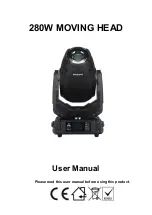
Important Safety Information
g. Students should not be allowed to prepare mixtures for analysis or other
purpose without competent supervision.
8. Handling poisons, corrosive or toxic materials
a. Certain liquids essential to the operation of equipment, for example mercury,
are poisonous or can give off poisonous vapours. Wear appropriate protective
clothing when handling such substances. Clean up any spillage immediately
and ventilate areas thoroughly using extraction equipment. Beware of slippery
floors.
b. Do not allow food to be brought into or consumed in the laboratory. Never use
chemical beakers as drinking vessels.
c. Where poisonous vapours are involved, smoking must be forbidden. Notices
should be displayed to enforce this.
d. Poisons and very toxic materials must be kept in a locked cupboard or store
and checked regularly. Use of such substances should be supervised.
e. When diluting concentrated acids and alkalis, the acid or alkali should be
added slowly to water while stirring. The reverse should never be attempted.
9. Avoiding cuts and burns
a. Take care when handling sharp edged components. Do not exert undue force
on glass or fragile items.
b. Hot surfaces cannot, in most cases, be totally shielded and can produce
severe burns even when not `visibly hot´. Use common sense and think which
parts of the equipment are likely to be hot.
10. Eye protection
a. Goggles must be worn whenever there is a risk to the eyes. Risk may arise
from powders, liquid splashes, vapours or splinters. Beware of debris from
fast moving air streams. Alkaline solutions are particularly dangerous to the
eyes.
b. Never look directly at a strong source of light such as a laser or Xenon arc
lamp. Ensure that equipment using such a source is positioned so that
passers-by cannot accidentally view the source or reflected ray.
c. Facilities for eye irrigation should always be available.
11. Ear protection
a. Ear protectors must be worn when operating noisy equipment.
12. Clothing
a. Suitable clothing should be worn in the laboratory. Loose garments can cause
serious injury if caught in rotating machinery. Ties, rings on fingers etc. should
be removed in these situations.
b. Additional protective clothing should be available for all members of staff and
students as appropriate.
13
Содержание UOP4 MKII
Страница 1: ...SOLID LIQUID EXTRACTION UNIT Instruction Manual UOP4 MKII ISSUE 16 November 2010...
Страница 4: ......
Страница 7: ...Equipment Diagrams Figure 1 Front View of UOP4 MKII Solid Liquid Extraction Unit 3...
Страница 8: ...Armfield Instruction Manual Figure 2 Side View of UOP4 MKII Solid Liquid Extraction Unit 4...
Страница 9: ...Equipment Diagrams Figure 3 UOP4 MKII Schematic Diagram Showing 3 Stage Process 5...
Страница 10: ...Armfield Instruction Manual Figure 4 UOP4 MkII Console Front View 6...
Страница 11: ...Equipment Diagrams Figure 5 UOP4 MkII Console Rear View 7...
Страница 12: ...Armfield Instruction Manual Figure 6 PCB Connections 8...




































